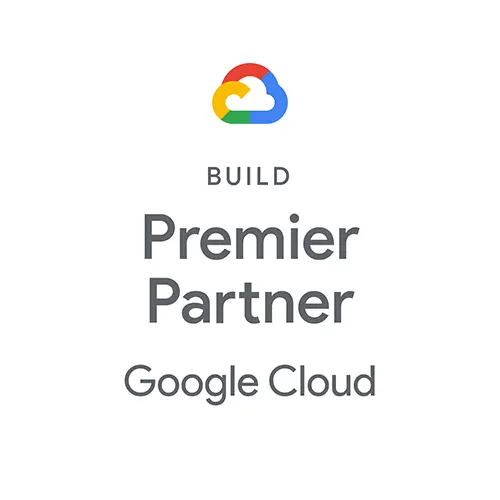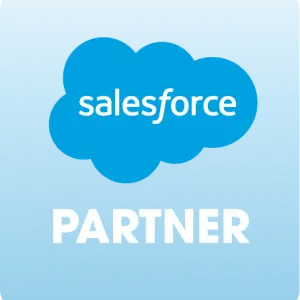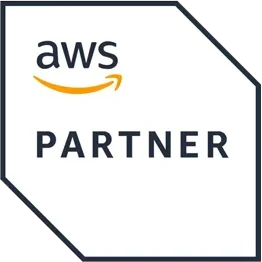What is SaaS Licensing?
SaaS licensing is a system of providing software to clients in exchange for a monthly fee. The SaaS (Software as a Service) licensing model resembles paying rent – companies can use software long-term as long as they continue to make their monthly payments.

What Are Some Examples of SaaS?
The multibillion-dollar SaaS industry boasts apps for practically everything, from watching movies to remotely signing a job contract to SaaS protection. Some of the most well-known SaaS apps include Microsoft Office 365, Netflix, DocuSign, and Zendesk.
Perpetual License vs. SaaS
Before the advent of SaaS, companies would buy perpetual license software, install it onto their hardware, and it was theirs forever. Within the SaaS licensing model, companies pay a monthly fee to use cloud-based apps. A SaaS subscription is often more affordable than paying a large sum upfront for a license.
Cloud-based SaaS licensing is convenient, agile, and customizable, promoting:
- Accessibility – Users can access SaaS apps from any device, including laptops, smartphones, or tablets.
- Efficiency – SaaS systems provide customers with automatic updates that provide enhanced features and services.
- A smooth deployment process – IT can skip the steps of setting up, powering, or cooling the server and jump straight to mastering the new software system and providing technical and computer support.
Does SaaS have a License?
SaaS does have a license. With perpetual license software, customers must purchase the license, while with SaaS users must sign the license to illustrate their compliance.
What is a SaaS License?
A SaaS license serves as an agreement between the software developer and the customer. SaaS license agreements aim to uphold customer compliance with guidelines and payments and the software developer's commitment to delivering updates, tech support, and customer privacy as promised.
A SaaS license includes the terms and conditions to which the customer must agree, such as:
- Services the customer can access
- How long the customer can use the product for
- How many users have authorized access
- Permitted locations for use
- Specific usage restrictions
- SaaS pricing
- SaaS protection options
The Main Types of Software Licensing
To better understand software licensing, let's break it down into the main categories.
Open-source software, which is free for anyone to use, includes four types:
- 1. Public domain is the least restrictive. Anyone can use, modify, or repurpose it.
- 2. Permissive is open for use with minimal copyright and trademark restrictions.
- 3. Copyleft allows for new usage if used under the same licensing restrictions, also known as restrictive licensing.
- 4. GNU Lesser General Public Software (LGPL) is free as long as you document that the software is LGPL and that you've altered the source code.
The most common SaaS systems, however, are proprietary software. Proprietary software is closed-source, the only type that costs money, and is the intellectual property of its owner. The copyright restricts users from copying, modifying, or distributing it without authorization.
SaaS Pricing and Strategies
SaaS pricing ranges from a few dollars a month to thousands. Choosing the right pricing strategy for your product involves countless factors. Developing a SaaS pricing strategy and applying it to a licensing model can help your company set rates that accurately reflect your product, are affordable, and attract customers. After you build the SaaS pricing strategy, however, don't set it in stone. Consistently re-evaluating the SaaS pricing system every three months can help your organization keep pace with the rapidly changing market.

Pricing Strategies
A SaaS pricing strategy is the method you use to set product rates. To develop a pricing strategy, answer focus questions such as:
- What is the cost of producing the SaaS?
- What do we need to charge to make a profit?
- Who is our customer base?
- What price range would our customers be willing to pay?
- What is the current condition of the market?
- What are our business objectives?
- Who are our competitors?
Let’s take a look at five popular SaaS pricing strategies:
Price skimming
Companies price their products at the highest possible rate that customers are willing to pay and then incrementally lower the price to attract the next layer of their targeted customers. This strategy aims to “skim” sequential layers of customers by gradually reducing the price over time.
Penetration pricing
The opposite of price skimming, penetration pricing targets customers by setting initial prices on the lower end of the spectrum. Penetration pricing strives to engage a large customer base, generate brand loyalty, and crush competitors.
Value-based pricing
Value-based pricing sets the cost of the product based on customers' understanding of its value. This method entails comprehensive market research and is especially applicable for sophisticated products with state-of-the-art features that users can't find anywhere else.
Cost-plus pricing
Cost-plus pricing does not take into account the perceived value of the product. Instead, it bases the rates on the cost of manufacturing the product and then adds a fixed percentage.
Competitive pricing
Based on the premise that clients will flock to their product because it's significantly cheaper than competing products, competitive pricing seeks to offer the lowest price on the market. After building a large clientele, the company raises its prices while still keeping them noticeably below the market rates.
Pricing Models
You can optimize your pricing strategy by incorporating it into an appropriate pricing model. A pricing model, also known as a licensing model, refers to the payment and licensing options you offer customers in return for using your SaaS app. Thales, for example, offers Sentinel licensing solutions that include an array of licensing models to satisfy customer needs.
Choosing the suitable models for your SaaS demands research, analysis, and trial and error. Here are popular pricing models worth considering:
Freemium provides free usage. Yet if users would like to upgrade to a more advanced version, they need to pay for a subscription. Spotify uses a freemium model.
Flat-rate pricing charges every customer the same price per month, no matter how many times they use the app or how many users there are. Basecamp, for instance, uses flat-rate pricing.
Usage-based pricing charges customers based on the number of times they use the SaaS app. You usually charge them at the end of each month, based on how many times they used your software. HelpDesk has a usage-based system.
Feature-based pricing offers different options for customers to choose from. The more they pay, the more features they can use. Quickbooks uses a feature-based model.
Tiered pricing offers customers different levels to match their needs. Usually, there will be three to five tiers. Each tier includes unique features or targets customers based on their usage rate. Zendesk uses tiered pricing.
User-based pricing – sometimes called account-based pricing – assigns a license to a particular person, no matter what device they're using or where they're working.
Capitalize on your pricing strategies
Developing pricing strategies and models is crucial to ensuring a high ROI. SaaS license management methods can aid your company in implementing its pricing strategies, as well as optimizing SaaS license practices.

What is SaaS License Management?
SaaS license management (SLM) for software developers involves an ongoing strategic process of documenting, monitoring, and updating the SaaS license agreements made with customers. While small businesses can more easily manage their licenses, larger businesses tracking thousands or even millions of licenses will need automation to assist managers with SaaS license management. SaaS license management enables software development companies to:
- Keep up with the large volumes of information
- Reduce the error margin
- Help customers optimize their accounts
- Ensure software security
- Stay on top of customer compliance
- Avoid legal pitfalls
- Keep track of all data, including payments, user experience, and feedback
Maintaining successful software license management ensures that customers have a consistent and reliable SaaS app they can depend on.
Best Practices
Successfully maintaining SaaS licensing demands intense dedication to researching, evaluating, and implementing best practices. Taking a holistic approach and focusing on every aspect of the SaaS licensing process enables your company to build and deliver a high-quality, desirable app that brings in significant profit. Take a look at these best practices to develop a SaaS app that will delight your customers:
Make tech-support availability a priority.
Providing support to your clients for the long term is just as important as the deployment stage. Clients want to feel that they are receiving quality service in return for their payments. Ensuring 24/7 availability to answer any questions allows your customers to feel at ease with their purchases. Moreover, you can actively boost engagement by sending frequent emails that offer helpful tips to guide customers through their SaaS usage. Integrating the emails into an automated email sequence can streamline the process.
Consider which contract is appropriate for your business.
A click-through contract enables employees to acquire the SaaS with a few clicks of the mouse. An enterprise contract, in contrast, involves building a relationship with a vendor and meticulously reviewing the contract together. Consider which contract works for your customers, or perhaps offer an option for both.
Make your pricing models simple.
Prioritize simplicity. You may lose customers due to overly-complicated pricing options, so make sure the pricing options are straightforward and uncomplicated.
Establish a strong records system.
Maintain a centralized, easily accessible dashboard or spreadsheet with each customer's licensing agreement and purchasing details. With hundreds, thousands, or millions of clients, a clear display of each licensing contract is key to effective SaaS license management.
Answer customer SaaS implementation needs.
Each company has different implementation needs depending on its size and resources. Offering a range of implementation services, from automatic implementation to full-service, from in-house to remote, to satisfy companies' SaaS deployment needs.
Supporting Successful SaaS Licensing
SaaS licensing demands countless hours of analysis, strategizing, and planning. To ensure optimal SaaS functioning, protection, and customer satisfaction, visit Sentinel, and find the right Saas licensing solution for your company.
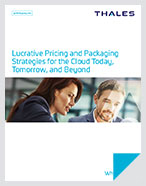
Software Packaging and Pricing Strategies for the Cloud - White Paper
Lucrative Pricing and Packaging Strategies for the Cloud Today, Tomorrow, and Beyond Software pricing and packaging is an art form regardless of whether it’s delivered as a service or as physical on premise software. There is also a lot of science involved. This paper...
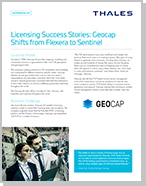
Geocap Enforced Licensing - Case Study
Geocap Switched to Sentinel Software Licensing – Should You? - Case Study When they evaluated Thales Sentinel to replace Flexera, Geocap found that Thales Sentinel solutions offered a complete set of utilities and variety of beneficial features, backed by exceptional...

